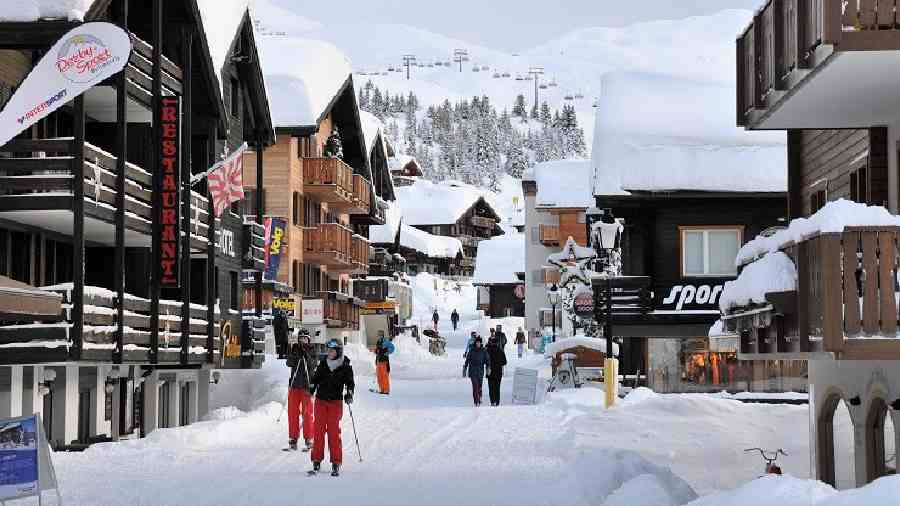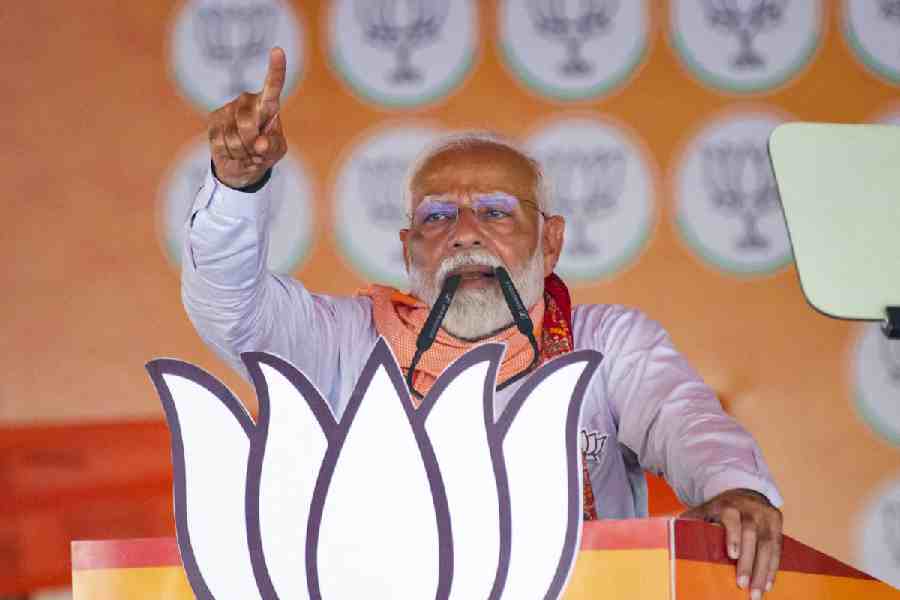It was the last thing Simon Bissig, a ski resort director, wanted to see as he trudged into the Swiss Alps guesthouse on a January day.
The bright wooden lodge should have been crowded with parents sipping hot drinks as they cheered on children gliding down the slopes.
Instead, it was empty, and in place of frosty windows, the panes were lashed with rain.
Where guests would have dined, an unlikely crisis session was being held. Marketing advisers reviewed plans for what had become a gnawing, existential question: What could be done with a ski resort without enough snow? “I think we have to see that something is dying,” said Michelle Furrer, the manager of the guesthouse, which is on the same slope as the ski resort, Sattel-Hochstuckli, that Bissig runs.
“We have to accept that, and then we can try to build — to find something else.”
It is hard for employees at the resort and many villagers in the town of Sattel, just under 30 miles from Zurich, to acknowledge that the days of skiing there may be numbered.
As the planet warms, Europe has faced a bruising year of climate crises.
In the summer, many regions suffered severe drought and record heat. Already this year, some areas have seen the highest-recorded winter temperatures — so warm that many ski resorts could not even make snow.
For Switzerland, whose glaciers and snowpack form a crucial storehouse for European water supplies, the effect has been especially alarming.
The country is warming at more than double the rate of the global mean and its glaciers lost 6 per cent of their volume in the last year alone, according to Swiss federal authorities and a glacier monitoring group.
The changes pose a risk to some parts of the Swiss ski industry which by some estimates generates around $5.5 billion a year. But in a country where nearly everyone skis, the loss of snow is more than an economic or environmental danger. It is a threat to national identity. “Skiing here was something like the people’s sport,” Bissig said.
“And you feel that little by little, that is diminishing. It’s very sad.”
For years, people in places like Sattel, where the tallest peaks are about 5,250 feet above sea level, thought they would be spared the worst snow loss. Now, climate scientists say places below 6,500 feet will most likely face a future without snow if current warming rates continue.
Even those higher up, a recent study suggested, could probably survive as tourist destinations only with the help of the energy- and water-intensive production of artificial snow.
When recent temperatures made even fake snow a challenge, social media was flooded with videos of crowds of tourists skiing down narrow strips of artificial snow on green Alpine slopes.
Local tabloids skewered Swiss resorts for desperate measures, including bringing in the snow by helicopter and offering alternative entertainment, like hiking with goats.
Last week, a new wave of precipitation augured snowier weeks ahead for higher Alpine resorts. But the problems are not over. Sattel-Hochstuckli, which used to average 12 to 25 inches of snow by now, has only three inches, and much of that is being washed away by rain.
At Sattel-Hochstuckli, Bissig opened the summer toboggan chutes for the Christmas tourist season. Elsewhere in Sattel, residents are developing year-long tourism strategies.
For decades, Herrenboden, a rustic wooden lodge nestled between the slopes, had been a winter-only ski chalet. But Silvan and Julia Betschart, who run it, have turned the three-generation family hotel and restaurant — decorated with sheep skins and deer antlers — into a year-round destination, catering to hikers in warmer months.
Betschart refuses to let the warm winter frighten him and is still sceptical that the main cause is climate change.
“We have had periods of bad winters,” he said.
“I was born in a snowless winter, and this year my daughter was. The snow comes back.” But climate scientists say there is a clear decline in snow.
“Statistically, it’s a super strong pattern: We are getting more and more years with less and less snow,” said Sabine Rumpf, a professor of environmental science at the University of Basel.
Her team has conducted satellite research showing that nearly 10 per cent of snow cover was no longer present in the summer months in Alpine regions at 5,577 feet above sea level. Sonia Seneviratne, at the Institute for Atmospheric and Climate Science in Zurich, said last summer was particularly unsettling because some glaciers lost up to 20 feet of ice.
If global leaders do not act to limit warming to a threshold of 1.5° Celsius, she said, the deterioration will quicken.
“The best case is that winters like this come again every so often,” she said. “The worst case is that in the future, thiswill look like a really good winter.”
Swiss resort managers who use fake snow bristle at criticism over their sometimes high-energy-use efforts to cope with the lack of snow.
Gstaad, a popular ski destination between Geneva and Bern, faced days of disparaging headlines and critiques from Green Party politicians after using a helicopter to transport snow and re-cover aski run washed out by rain.










